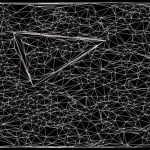“Who guards the guardians?” This is a question from Roman times which occurred to me as relevant to this topic. We use constrained random to get better coverage in simulation. But what ensures that our constrained random testbenches are not wanting, maybe over constrained or deficient in other ways? If we are improving with a faulty… Read More
Tag: constrained random
Randomization Fools Us Some of the Time
Though hopefully not some of us all of the time. Randomization is a technique used in verification to improve coverage in testing. You develop tests you know you have to run, then you throw randomization on top of that to search around those starter tests, to explore possibilities you haven’t considered. Truly random tests are not… Read More
Cadence Increases Verification Efficiency up to 5X with Xcelium ML
SoC verification has always been an interesting topic for me. Having worked at companies like Zycad that offered hardware accelerators for logic and fault simulation, the concept of reducing the time needed to verify a complex SoC has occupied a lot of my thoughts. The bar we always tried to clear was actually simple to articulate… Read More
Effective Verification Coverage through UVM & MDV
In the current semiconductor design landscape, the design size and complexity of SoCs has grown to large extent with stable tools and technologies that can take care of integrating several IPs together. With that mammoth growth in designs, verification flows are evolving continuously to tackle the verification challenges … Read More
Constrain all you want, we’ll solve more
EDA tool development is always pushing the boundaries, driven in part by bigger, faster chips and more complex IP. For several years now, the trend has been developing tools that spot problems faster without waiting for the “big bang” synthesis result that takes hours and hours. Vendors, with help from customers, are tuning tools… Read More
A random walk down OS-VVM
Unlike one prevailing theory of financial markets, digital designs definitely don’t function or evolve randomly. But many engineers have bought into the theory that designs can be completely tested randomly. Certainly there is value to randomness, exercising all combinations of inputs, including unexpected ones a designer… Read More







